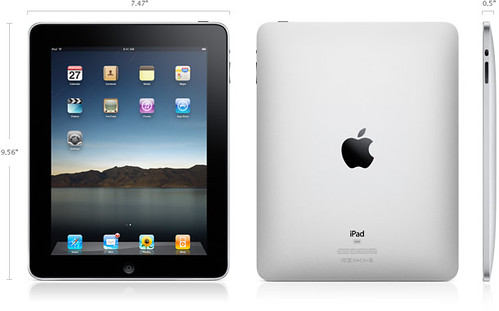Droid me
Warning, this post is TOTALLY geeked out, so don’t say I didn’t warn you.
I like to think that I’m a platform skeptic, but so often the choices we make about a piece of technology have little to do with the piece of equipment itself, and more about ancillary issues, or perception. I hope I gave a fair shot at the Apple in my last piece. When I upgraded my mobile phone, the choice was a simple one and had more to do with the carriers, AT&T: no way vs. Verizon: the devil I know and have all my family phones on with staggered contract dates making it near impossible to leave without some serious advanced planning. Getting the Droid was my first chance to get something as an early adopter in a long time. It was in some way an emotional choice, but I did buck the “gender-typing” of the product. It seemed faster, and had a physical keyboard. True, it is a very testosterone driven device, with a synth-voiced “DROID” announcing each text and alert. Apparently, I’m not the only one annoyed by the word android/droid showing up where I don’t want it.
Since I’m picking on Steve Jobs/Apple, I wanted to provide more information and background about the Flash/Apple mobile issues from my last post. First, the article that shared Jobs “real feelings” about Adobe and Flash, and Adobe’s response. I include this not to pass tech gossip (although it is pretty hysterical) but because a hint of the future according to Adobe. In a nutshell, long-run– HTML 5 will not take the place of Flash; short-run– Flash will be coming to the Android, BlackBerry, Palm, and Nokia platforms AND they have a work-around to get flash apps on the iPhone browser. It’ll be interesting to see what happens.
How’s the Droid after almost three months? First, I’m seeing a lot more folks in my ed tech PLN who are going to Android devices (although with the plethora of Androids coming out, not all are going for the Droid). Interestingly, I did see one who was anxious to “leave” his iPhone for a more open mobile. That’s a small “n” to extrapolate anything larger from, BUT I think it does exemplify that Android has the reputation of being an “open” system. This may be a mis-perception as there are complaints about how “open” Google has been about sharing source code with outside developers, and it is brought to us by Google, everyone’s favorite “big brother”. On the whole though, I’m happy. This device has taken over a lot of my time. It’s more a consumption device than a creation device. What do I do with it?
- Taking pictures: I love the camera (as promised the OS upgrade in December did fix the auto-focus problem). I use it to document things, I send photos up to twitter, and other social media. I can livecast, although I haven’t run into a situation that really calls for it.
My favorite recent education use was video-taping a student with a LOT of self-control issues. He was having to finish up work from class instead of going on the computers during lab time (not a preferred activity). He started to hit his stride at one point with the work, and I videotaped him. I then showed him the video, and pointed out what he was doing “right” and asked him to really think about what it looked like when he was on task and completing work. I also showed it to his teacher so he could see something positive from the student. - Posting to twitter: Even with a physical keyboard, I haven’t tired to write out a post of this length on it, and probably never will, but it’s great for twitter. I use Twidroid, and I’ve opted for the Pro version. I use AnyPost to send updates to Plurk at the same time.
- Getting email: This has not worked well for reasons that are not the phone’s fault. I quit looking at Blackberries when I found out that my workplace would not let line workers like me on the network server, so push email from work was not possible. They do have a nice Web interface, so I use that, and can use the same version of the web mail that I get on my laptop, instead of some mobile version. My primary email is with Yahoo! which only gives POP access to Mail Plus subscribers. Although there are lots of instructional videos on how to set it up with SMTP, it worked…briefly and stopped after about three days. I haven’t decided if I’ll spring for Yahoo Email? So I get Tweets pushed out to me, but not email. I may think about switching over to GMail, but that’s a hard choice after 10+ years of using Yahoo!Mail.
- Games: I play Sudoku, but it’s my son who is the game fiend. When we’re out and about and he gets bored with games on the old LG I handed down to him, he plays Jewels and Pinball. It’s like the old days of traveling with him as a toddler, and making sure I had a “new” toy hidden to pull out in the last third of trip.
- Reading: I’m using the lighter web version of Google Reader, and I’m happy with that for my RSS feeds. For books, there are lots of free ereaders available, but their most palatable content is from the public domain. Kindle, and BN/Nook do not have Android apps yet. I added eReader’s Android app, which was a bit of a chance, as it’s not on the Marketplace, and instead resides on their site. So far, the phone’s still working, but I did back up my SD card before I added it. They have best sellers available, so I’m reading my first novel on it. I’m not crazy about the small screen size for reading, but I like the portability.
- Music: For playing music I own, Double-Twist will let you do iTunes syncing (it’s also great for syncing your Android device in general), and I’m liking the Amazon MP3 market just fine. Since my biggest headaches with Apple have been with it’s d*mned DRM and iTunes. I’m happy to go elsewhere, thank you very much. There is a default player, and I’ve been trying out Meridian Player, but I’m thinking of heading back to the default player. I use a “tape deck” converter to plug the phone into my car stereo and blast tunes through the speakers. I’m currently using both Slacker, and Pandora for radio, and I haven’t made up my mind which I prefer. When I decide I will likely pay for subscription service.
- Podcasts: I’m trying a bunch of different apps, and haven’t decided on which I prefer. I’ve only had the NPR News app for a few days. I thought it would just be text, BUT it does allow you to play selected stories. The UI and usability are great, and it lets me get shows like All Things Considered, and Morning Edition that only distribute some pieces on audio podcasts. There is another NPR Podcast app, but it just doesn’t work as well. I did start with the Listen App from Google, but it was buggy and hiccuped a lot. I’m using Beyond Pod now, which does have some force closes (basically, the program seizes), but not as often as it happened with Listen. Either will let me download (nice for plane trips or low connectivity situations).
- Video viewing: My son uses it for this more than I do. On a long trip, I can hand it to him and he’ll watch YouTube videos. You can see YouTube, and some UStream videos (obviously ones that have been converted from Flash?). I would have liked to be able to purchase commercial videos to watch on my phone. I tried to use Zune, but if there is one company that will make you LONG for Apple customer care, it’s Microsoft. I still can’t load their d@mned player on my PC. So, iTunes has a de facto monopoly on MP4 videos for mobile devices and will only let you load to their devices. I’ve looked online, and all I can see is some really complicated work-arounds involving conversion software, or going illegal by going to bit-torrent. I’m hoping Amazon will expand it’s Android offerings from MP3s to MP4s.
- Web surfing: One of the secrets of Android is that it does have “multi-touch” capability, it’s just not used in most apps. One app that has it is an alternative web browser, Dolphin, which has a nice “gesture control” for doing routine tasks (like saving bookmarks to Diigo or Delicious). It’s a very nice web experience, and you get everything except Flash-based applications. It’s so nice when I’m reading posts in my reader, or getting a tweet with a link, to be able to click through and see it.
- Directions please: I have many annoying habits. One that drove my husband nuts was that I would forget to print out maps, and then call him when I was on my way somewhere, asking him to look up directions. It’s a miracle we’re still married after that! I didn’t want to pony up the $10 a month to pay Verizon for their navigation service with my old phone, so I was happy to have Google’s navigation included for free. It is awesome.
- Notes and lists: The phone is a really handy tool for taking notes and keeping lists. There are number of note taking programs. I’ve been happy with Note Everything, and upgraded to the paid version, which gets me checklists that are handy for shopping. In addition, using the mobile version of Google Docs lets me look at documents, but not edit them. I also have the lite version of Documents to Go which lets you view Word and Excel documents, and a free PDF viewer app. The pro version of Docs to Go would allow me to edit Word/Excel, along with PowerPoints and PDFs. My husband finds this invaluable, I haven’t felt the need to pay $30, although there have been sales on it.
- Calendar and Task Lists: For tasks, I use Astrid which lets me sync with Remember the Milk (their pro app requires a monthly payment, I don’t mind paying for apps, but I don’t like having ongoing payments). Here is a little known secret about the Calendar function in Android, it’s not as good as the mobile version of gCal. Seriously, you can’t edit events, etc. It’s good for pushing out reminders to you, but editing is nicer.
Who do I think would not like this phone? If you need push email and your workplace will only support Blackberry. If you want your phone to work, have a really easy interface, and you’re not a techie (go for the iPhone). You use your phone in the car a lot, and need solid hands-free, please read this first (you probably want a Blackberry).
What about call quality? A lot of the comparison with Android devices (especially the Droid on Verizon $$$) with iPhone (on AT&T where they’re not happy until you’re unhappy) center on connection and call quality. Read this article to put this in perspective. I’ve had dropped calls on Verizon with all my phones, including the Droid and I’m just mastering using a capacitive device and holding it next to my ear. These are not great phones. Most tests put the Droid higher on this, but it still isn’t great.

 With multiple fonts, that looked cluttered and like your grandmother’s Victorian parlour
With multiple fonts, that looked cluttered and like your grandmother’s Victorian parlour





Recent Comments